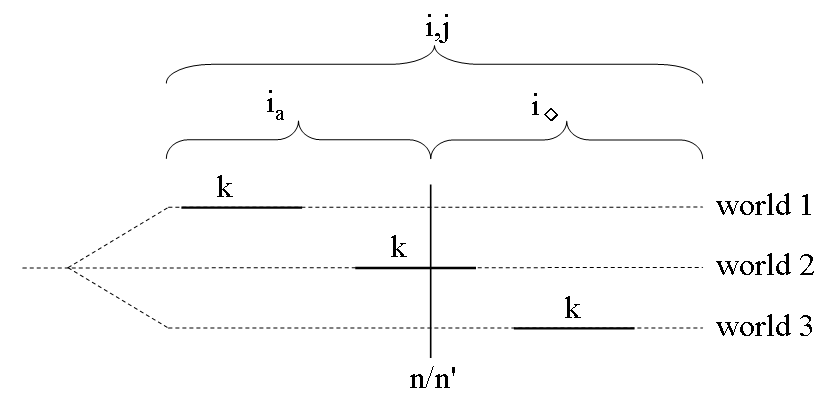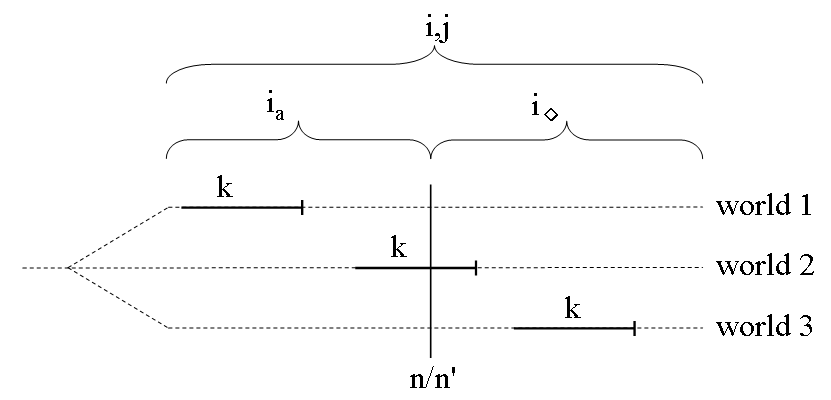- Dutch
- Frisian
- Saterfrisian
- Afrikaans
-
- Syntax
- Preface and acknowledgements
- Verbs and Verb Phrases
- 1 Characterization and classification
- 2 Projection of verb phrases I:Argument structure
- 3 Projection of verb phrases II:Verb frame alternations
- Introduction
- 3.1. Main types
- 3.2. Alternations involving the external argument
- 3.3. Alternations of noun phrases and PPs
- 3.3.1. Dative/PP alternations (dative shift)
- 3.3.1.1. Dative alternation with aan-phrases (recipients)
- 3.3.1.2. Dative alternation with naar-phrases (goals)
- 3.3.1.3. Dative alternation with van-phrases (sources)
- 3.3.1.4. Dative alternation with bij-phrases (possessors)
- 3.3.1.5. Dative alternation with voor-phrases (benefactives)
- 3.3.1.6. Conclusion
- 3.3.1.7. Bibliographical notes
- 3.3.2. Accusative/PP alternations
- 3.3.3. Nominative/PP alternations
- 3.3.1. Dative/PP alternations (dative shift)
- 3.4. Some apparent cases of verb frame alternation
- 3.5. Bibliographical notes
- 4 Projection of verb phrases IIIa:Selection of clauses/verb phrases
- 5 Projection of verb phrases IIIb:Argument and complementive clauses
- Introduction
- 5.1. Finite argument clauses
- 5.2. Infinitival argument clauses
- 5.3. Complementive clauses
- 6 Projection of verb phrases IIIc:Complements of non-main verbs
- 7 Projection of verb phrases IIId:Verb clusters
- 8 Projection of verb phrases IV: Adverbial modification
- 9 Word order in the clause I:General introduction
- 10 Word order in the clause II:Position of the finite verb (verb-first/second)
- 11 Word order in the clause III:Clause-initial position (wh-movement)
- Introduction
- 11.1. The formation of V1- and V2-clauses
- 11.2. Clause-initial position remains (phonetically) empty
- 11.3. Clause-initial position is filled
- 12 Word order in the clause IV:Postverbal field (extraposition)
- 13 Word order in the clause V: Middle field (scrambling)
- 14 Main-clause external elements
- Nouns and Noun Phrases
- 1 Characterization and classification
- 2 Projection of noun phrases I: complementation
- Introduction
- 2.1. General observations
- 2.2. Prepositional and nominal complements
- 2.3. Clausal complements
- 2.4. Bibliographical notes
- 3 Projection of noun phrases II: modification
- Introduction
- 3.1. Restrictive and non-restrictive modifiers
- 3.2. Premodification
- 3.3. Postmodification
- 3.3.1. Adpositional phrases
- 3.3.2. Relative clauses
- 3.3.3. Infinitival clauses
- 3.3.4. A special case: clauses referring to a proposition
- 3.3.5. Adjectival phrases
- 3.3.6. Adverbial postmodification
- 3.4. Bibliographical notes
- 4 Projection of noun phrases III: binominal constructions
- Introduction
- 4.1. Binominal constructions without a preposition
- 4.2. Binominal constructions with a preposition
- 4.3. Bibliographical notes
- 5 Determiners: articles and pronouns
- Introduction
- 5.1. Articles
- 5.2. Pronouns
- 5.3. Bibliographical notes
- 6 Numerals and quantifiers
- 7 Pre-determiners
- Introduction
- 7.1. The universal quantifier al 'all' and its alternants
- 7.2. The pre-determiner heel 'all/whole'
- 7.3. A note on focus particles
- 7.4. Bibliographical notes
- 8 Syntactic uses of noun phrases
- Adjectives and Adjective Phrases
- 1 Characteristics and classification
- 2 Projection of adjective phrases I: Complementation
- 3 Projection of adjective phrases II: Modification
- 4 Projection of adjective phrases III: Comparison
- 5 Attributive use of the adjective phrase
- 6 Predicative use of the adjective phrase
- 7 The partitive genitive construction
- 8 Adverbial use of the adjective phrase
- 9 Participles and infinitives: their adjectival use
- 10 Special constructions
- Adpositions and adpositional phrases
- 1 Characteristics and classification
- Introduction
- 1.1. Characterization of the category adposition
- 1.2. A formal classification of adpositional phrases
- 1.3. A semantic classification of adpositional phrases
- 1.3.1. Spatial adpositions
- 1.3.2. Temporal adpositions
- 1.3.3. Non-spatial/temporal prepositions
- 1.4. Borderline cases
- 1.5. Bibliographical notes
- 2 Projection of adpositional phrases: Complementation
- 3 Projection of adpositional phrases: Modification
- 4 Syntactic uses of the adpositional phrase
- 5 R-pronominalization and R-words
- 1 Characteristics and classification
- Coordination and Ellipsis
- Nouns and noun phrases (JANUARI 2025)
- 15 Characterization and classification
- 16 Projection of noun phrases I: Complementation
- 16.0. Introduction
- 16.1. General observations
- 16.2. Prepositional and nominal complements
- 16.3. Clausal complements
- 16.4. Bibliographical notes
- 17 Projection of noun phrases II: Modification
- 17.0. Introduction
- 17.1. Restrictive and non-restrictive modifiers
- 17.2. Premodification
- 17.3. Postmodification
- 17.3.1. Adpositional phrases
- 17.3.2. Relative clauses
- 17.3.3. Infinitival clauses
- 17.3.4. A special case: clauses referring to a proposition
- 17.3.5. Adjectival phrases
- 17.3.6. Adverbial postmodification
- 17.4. Bibliographical notes
- 18 Projection of noun phrases III: Binominal constructions
- 18.0. Introduction
- 18.1. Binominal constructions without a preposition
- 18.2. Binominal constructions with a preposition
- 18.3. Bibliographical notes
- 19 Determiners: Articles and pronouns
- 19.0. Introduction
- 19.1. Articles
- 19.2. Pronouns
- 19.3. Bibliographical notes
- 20 Numerals and quantifiers
- 20.0. Introduction
- 20.1. Numerals
- 20.2. Quantifiers
- 20.2.1. Introduction
- 20.2.2. Universal quantifiers: ieder/elk ‘every’ and alle ‘all’
- 20.2.3. Existential quantifiers: sommige ‘some’ and enkele ‘some’
- 20.2.4. Degree quantifiers: veel ‘many/much’ and weinig ‘few/little’
- 20.2.5. Modification of quantifiers
- 20.2.6. A note on the adverbial use of degree quantifiers
- 20.3. Quantitative er constructions
- 20.4. Partitive and pseudo-partitive constructions
- 20.5. Bibliographical notes
- 21 Predeterminers
- 21.0. Introduction
- 21.1. The universal quantifier al ‘all’ and its alternants
- 21.2. The predeterminer heel ‘all/whole’
- 21.3. A note on focus particles
- 21.4. Bibliographical notes
- 22 Syntactic uses of noun phrases
- 23 Referential dependencies (binding)
- Syntax
-
- General
Section 1.5.1 discussed the binary tense theory proposed by Te Winkel (1866) and Verkuyl (2008), according to which the three binary distinctions in (337) are used in mental representations of tense. Languages may differ when it comes to the grammatical means used for expressing the oppositions in (337): this can be done within the verbal system by means of inflection and/or auxiliaries, but may also involve the use of adverbial phrases, aspectual markers, pragmatic information, etc. Verkuyl claims that Dutch expresses all oppositions in (337) in the verbal system: +past is expressed by inflection, +posterior by means of the verb zullen 'will' , and +perfect by means of the auxiliaries hebben 'to have' and zijn 'to be' .
| a. | ±past: present versus past |
| b. | ±posterior: future versus non-future |
| c. | ±perfect: imperfect versus perfect |
Section 1.5.2 has argued at length that the claim that zullen is a future auxiliary is incorrect: it is an epistemic modal and it is only due to pragmatic considerations that examples with zullen are sometimes interpreted with future time reference. If this is indeed correct, the Dutch verbal system is based on just the binary features ±past and ±perfect, and therefore does not make an eight-way, but only a four-way tense distinction by means of inflection and auxiliaries . This means that the traditional view on the Dutch verbal tense system in Table 9 from Section 1.5.1, sub I, must be replaced by the one in Table 11; the examples with zullen no longer define a separate set of future tenses.
| present | past | |
| imperfect | simple present (o.t.t.) Ik wandel/Ik zal wandelen. I walk/I will walk | simple past (o.v.t.) Ik wandelde/Ik zou wandelen. I walked/I would walk |
| perfect | present perfect (v.t.t.) Ik heb gewandeld/ Ik zal hebben gewandeld. I have walked/I will have walked | past perfect (v.v.t.) Ik had gewandeld/ Ik zou hebben gewandeld. I had walked/I would have walked |
This revised view on the verbal tense system of Dutch implies that utterances in the simple present/past can normally refer to any event time interval in present/past-tense interval i; eventuality k may precede, follow or overlap with n/n', as indicated in Figure 25. Recall that the number of possible worlds is in principle infinite and that we simply select a number of them that suit our purpose.

The representation of the perfect tenses is virtually identical to that in Figure 25; the only difference is that the eventualities are construed as completed autonomous units within the present/past-tense interval. As before, we indicate this in Figure 26 by means of a vertical line at the end of the event time interval k.

Note that we assumed in the figures above that the default value of time interval j (that is, the time interval within which the eventuality denoted by the lexical projection of the main verb must take place) is equal to that of the complete present/past-tense interval i . In the following sections we will show that contextual information (both of a linguistic and a non-linguistic nature) may overrule this default interpretation and that this gives rise to more restricted interpretations.
Before we start with the Dutch verbal tense system, we want to note that, although Verkuyl (2008) was probably wrong in assuming that binary tense theory was perfectly mirrored by this system, it seems that Dutch is very suitable for studying the interaction of tense, modality and pragmatic information because it can be characterized as a strongly "tense-oriented" language. First, Dutch normally does not mark mood on the verb (the exception being imperative marking), so that it differs from, e.g., German in that it does not have a productive subjunctive marking on the verb; see Section 1.4.3 for more discussion. Second, Dutch normally does not mark syntactic aspect on the verb, so that it differs from, e.g., English in that progressive aspect can simply be expressed by means of the simple present/past. Third, Dutch does not require epistemic modality to be marked, so that it differs from English in that the expression of non-actualized ("future") events need not be marked by the presence of will (or some other modal verb); Dutch zullen 'will' is optional in such cases. Finally, it may be useful to mention that, contrary to what is the case in English, adverbial phrases like gisteren 'yesterday' that refer to temporal intervals preceding speech time can be used in present-perfect constructions; Dutch does not have the property found in English that such adverbials can only be used in past-tense constructions. As a result, Dutch enables us to directly investigate the interaction of past tense, epistemic modality and pragmatics in deriving special meaning effects without the intervention of any of the more idiosyncratic properties concerning mood/modality, aspect and adverbial modification of the type mentioned above.
- 2008Binary tensenullnullStanfordCSLI Publications
- 2008Binary tensenullnullStanfordCSLI Publications
- 1866Over de wijzen en tijden der werkwoordenDe Taalgids866-75
